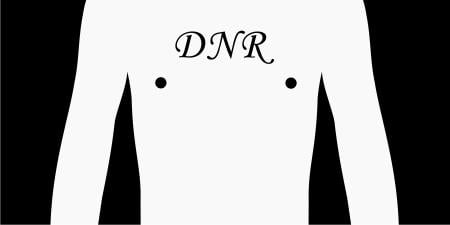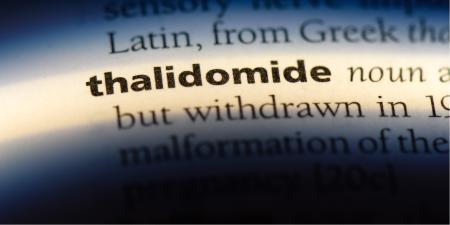Since the trend toward reality TV in medicine took off around 1997, 30 or more emergency departments have invited film crews in for "around-the-clock taping"1. Many physicians and administrators at participating hospitals are pleased with the results. The reality shows, they say, counteract the glamorized portrayals in dramas such as ER that create unrealistic expectations for survival and recovery from trauma. Thus, they argue, the reality shows—Trauma, Paramedics, Hopkins 24/7, and the like—educate the public and demystify the emergency department encounter.
Not all physicians agree. Medical ethics rests on the bedrock understanding that those who are sick are vulnerable. This fundamental truth gives rise to the ethical and professional standards governing patient privacy and confidentiality as well as to a gravity of purpose and conduct that suffuses the clinical interaction.
Some physicians believe that making an entertainment of actual clinical encounters violates these ethical and professional standards. The presence of non-medical team members, they claim, invades patient privacy, exploits the sick and dying, and could compromise clinicians' ability to work most efficiently.
One physician who felt strongly about the exploitation of critically ill or injured—and therefore especially vulnerable—individuals was Dr. Martin Fujimura, whose one-man crusade helped spearhead a movement for change in AMA policy. A family practitioner in Dayton, Ohio, Dr. Fujimura began campaigning for change in the fall of 1999. He penned letters to the Ohio State Medical Association, published an article for In Confidence magazine2, and wrote to the AMA Council on Ethical and Judicial Affairs (CEJA) requesting that the national organization of physicians develop a policy to curtail this practice of filming. "I am particularly saddened," his letter stated, "by what I perceive as the exploitation of patients who need our care and protection the most, i.e., the severely injured and the dying. How is it permissible to allow camera crews to film half-naked, dying patients (even teenagers and children) prior to obtaining consent?" he challenged.
In response to Dr. Fujimura's request, CEJA researched the topic and, in December 2000, solicited comments from the AMA's House of Delegates on the possible need for ethical guidelines governing patient filming. CEJA compiled the comments, drafted a recommendation, and presented it to the House of Delegates reference committee at the annual meeting in June 2001. The recommendation was approved, adopted as AMA policy by the House, and will become part of the AMA Code of Medical Ethics.
In essence, the recent AMA policy on filming of patients in health care settings for the purpose of commercial broadcast states that doing so without consent is a violation of the patient's privacy3. Consent, says the policy, "is an ethical requirement for both initial filming and subsequent broadcast for public viewing." The report argues that, because filming cannot confer any therapeutic benefit to the patients, it is not worth the risk to patient privacy (and possibly well being) that it entails. Therefore, the policy states, "it is appropriate to limit filming to instances where the party being filmed can explicitly consent." Many trauma patients are unconscious or in distress too great to permit their giving informed consent. In such circumstances, the temptation is to allow the next of kin or other surrogate decision maker to provide consent. The report says this is not satisfactory. Consent by a surrogate health care decision maker is not an ethically appropriate substitute for consent by the patient because the role of such surrogates is to make decisions necessary for medical treatment or refusal of treatment. Consenting to or refusing to be filmed is not a medical treatment decision.
For most of the trauma and emergency room footage that has aired on television, patients' consent was received after the filming and before the broadcast. If patients did not consent, their portion of the film was not broadcast. But the filming itself had already violated their privacy. To understand why, it is necessary to distinguish between privacy and confidentiality. Patient privacy refers to the fact that patients are entitled to have only those individuals involved in their medical care examine them or observe their examination. AMA policy dictates that "physicians are ethically and legally required to protect the personal privacy and other legal rights of patients"4. Confidentiality, on the other hand, refers to what happens afterward to information shared in private with the physician. Patient records and conversations fall under this protection and give sanctity to the patient-physician relationship. Information that is shared with the physician should not be disclosed to others, according to AMA policy on confidentiality, without the patient's consent or unless the disclosure can be "ethically and legally justified by overriding social considerations"5. Examples of overriding social considerations include patient threats of harm to self or others from physical violence or communicable disease. Protection of privacy and confidentiality go hand-in-hand. If the patient-physician encounter is not private, confidentiality is far more difficult to secure.
Thus, unless a stationary camera is used or a health professional does the filming, the privacy of the clinical encounter is violated when filming takes place. Receiving consent for distributing the film after the fact avoids breaches of confidentiality but does nothing to undo the invasion of privacy. Breach of patient privacy is permissible only through expressed informed consent before filming.
It is important to recognize that, under the new AMA policy, patients who are conscious and able to give consent may be filmed. Even here, though, the report that paved the way for the new policy warns that the time required for informing the patient fully about what the film crew may observe and record is time perhaps better spent on diagnosis and treatment.
As stewards of the AMA Code of Medical Ethics, the Council on Ethical and Judicial Affairs develops opinions on a variety of ethical and professional issues that confront physicians and recommends them to the House of Delegates each year for action. Any physician, any concerned individual, can bring a matter to the Council's attention. When Dr. Fujimura did so, CEJA transformed his interest in protecting emergency patients into an opinion of the Code, where it stands as a guide for physicians who strive to practice ethically.
References
-
Foubister V. Acting in the ER: participants in the documentary series "Trauma: Life in the ER" laud its educational value and positive portrayal of physicians. But critics have patient privacy concerns. AMNews. March 27, 2000. Available at: http://www.amednews.com/2000/prsa0327. Accessed June 25, 2001.
-
Fujimura MK. Private matters: lights! camera! trauma! Confidentiality and new media. In Confidence. 2000;8:4-5.
-
AMA. Opinion 5.045, Filming Patients in Health Care Settings.
-
AMA. Code of Medical Ethics, Opinion 5.04.
-
AMA. Code of Medical Ethics, Opinion 5.05.



